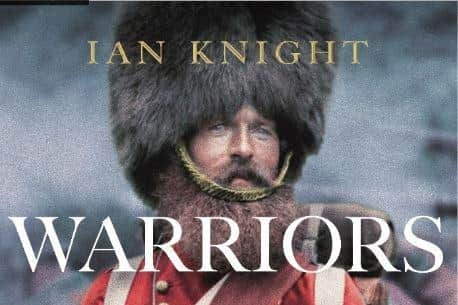Warriors In Scarlet: The Life and Times of the Last Redcoats
and live on Freeview channel 276
Ian offers a gripping history of the Victorian soldier between 1838 and 1860 from the Battle of Bossenden Wood to the Crimean War, a period of seismic change. He draws on first-hand accounts to show the reality of life in the army – the drudgery of peace-time service, the excitement and privations of postings overseas, the floggings and desertions and the regimental pride and comradeship. The rapid expansion of the British Empire saw the army fighting in small wars across the world. Ian reveals the brutal reality of colonial conflict from both sides. British soldiers had been trained in tactics which had beaten Napoleon; they now had to adapt when faced with warriors with very different skills fighting on their home ground – one of the reasons the era of the red coat came to an end.
“Originally I had pitched another book looking at other aspects of the Anglo-Zulu wars but my publisher said ‘What about looking at other aspects of the Victorian soldier?’ Originally we were thinking about the whole of the Victorian era in one book, 60 years of huge social change and lots of different military activity around the world. But it became clear there's no way I was going to get the whole of that into one book and so we decided on a slightly arbitrary cut off which in some ways was not arbitrary at all. We decided to take it through to the 1860s when the British army started to part from the red coat and started to use khaki.
Advertisement
Hide AdAdvertisement
Hide Ad“One of the reasons was improving weapon technology. One of the reasons they used to wear bright red coats on the battle field was that with musket fire at a limited range you would get a lot of smoke and so you would need to stand out so that you knew who was on your side and who wasn't. But by 1860 weapon technology meant that you were shooting people at a longer distance and there started to be a lot less smoke. And also by the 1860s you were fighting in hostile terrain in places like India or New Zealand where it just wasn’t practical to wear the bright red tunics. So there was a move away wearing the parade uniform to something that made more sense.


“I also wanted to look at various early wars that get glossed over but which I find interesting. People tend to pick on Waterloo, go straight to the Crimea and then the Boer War but I think the gaps in between are fascinating and they're the ones that show the progression. I wanted to look at the Indian mutiny where a lot of British troops were issued with white uniforms but they stood out particularly in the bright Indian light. And so a lot of the soldiers started dying them khaki colours and that was the point where the British troops started to fight in large numbers in khaki. When you get to the 1860s scarlet had pretty much gone.”
But there was change too at the start of the era Ian is looking at: “In the earlier period, the 1840s and the 1850s, the British are really fighting for the first time in small colonial wars around the globe.”